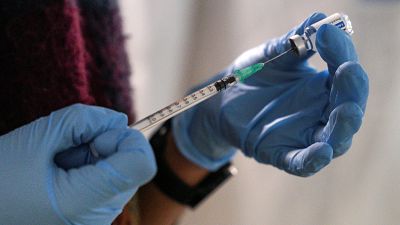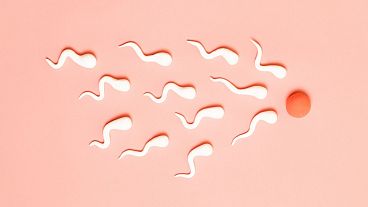Vaccines weren’t the silver bullet ending the pandemic we all hoped they would be. The search continued in 2021 for new technological ways to combat COVID.
Two years into the pandemic, COVID-19 doesn’t appear to be letting up.
Despite successful vaccines, the new Omicron variant is ripping through countries around the world, meaning scientists and engineers still have to find novel ways to combat the virus.
Whether it's masks which help the deaf or hi-tech chemistry to develop the first COVID-19 pills, the search goes on for a way to return the world to normal.
Drones to deliver vaccines
In May, Ghana became one of the first countries to deliver COVID-19 vaccines by drone thanks to technology from drone makers, Zipline.
The American medical delivery company had previously operated in the US, Ghana and Rwanda delivering vaccines for polio and yellow fever.
Improving communication
Formula 1's Alpine - like many other racing car teams - was brought to a standstill by the pandemic, but the engineers kept busy by teaming up with a surgeon to improve patient care in COVID-19 wards.
Heavy-duty PPE which needs to be worn on the wards makes it difficult for staff to communicate with others.
The University of Leicester's Professor of Medicine Tim Coats came up with the idea of putting a cheap voice-enhancing microphone inside the clunky elastomeric respirator mask worn by staff on COVID-19 wards.
"When you're wearing this sort of mask talking to patients is quite difficult, but when I switch on the Medicom device, then suddenly my voice is projected, the patient can hear me, the team around the patient can hear me," he explained.
Pills and nasal sprays for COVID symptoms
There were spikes in COVID-19 cases around the world in 2021, with Europe facing soaring numbers towards the end of the year.
The cost of transporting the jabs, accessibility, and vaccine hesitancy were blamed.
There also needs to be a medical infrastructure, doctors, and nurses to enable the delivery of injections on the ground.
It's no surprise that so many companies searched for an oral alternative to vaccines, a pill that would be cheap and easy to distribute.
Giant pharma companies like Pfizer and Merck were developing and trialing pills to reduce symptoms of the virus.
Nasal sprays too are now being tested.
The company Raphael Labs was developing a plant based product which its chairman Rakesh Uppal said had been trialed on hundreds of health workers in India. It is currently being tested at a secure laboratory at Queen Mary University of London.
"This is actually stopping you from getting it," said Uppal.
The company was seeking regulatory approval in India which would open it up to 40 other markets.
Long COVID research
As well as preventing the spread of the virus and mitigating its symptoms, scientists were finding ways of determining why a sizeable number of people suffer from long COVID, whose symptoms include utter fatigue, breathlessness, palpitations and dizziness.
In Oxford, the biotech company Perspectum used intelligent software on their multi-organ scans of people with long COVID. Its studies found COVID-19 causes structural changes in a variety of organs, including the heart.
The researchers urged general practitioners to be aware of the damage long COVID can cause and ensure patients have access to specialist treatment.
Face masks
In Hong Kong, mask designers were also busy. One problem with masks in particular is that they can be an obstacle to people with hearing impairments.
Researchers at Hong Kong Lingnan University overcame the problem with a new transparent face mask which they said enabled barrier-free communication, assisting people who are hearing-impaired by ensuring they could see people's lips move when they speak.
The mask also allowed deaf people to see facial expressions more easily, helping them understand a person's intentions and emotions.
For more on this story, watch the video in the media player above.



